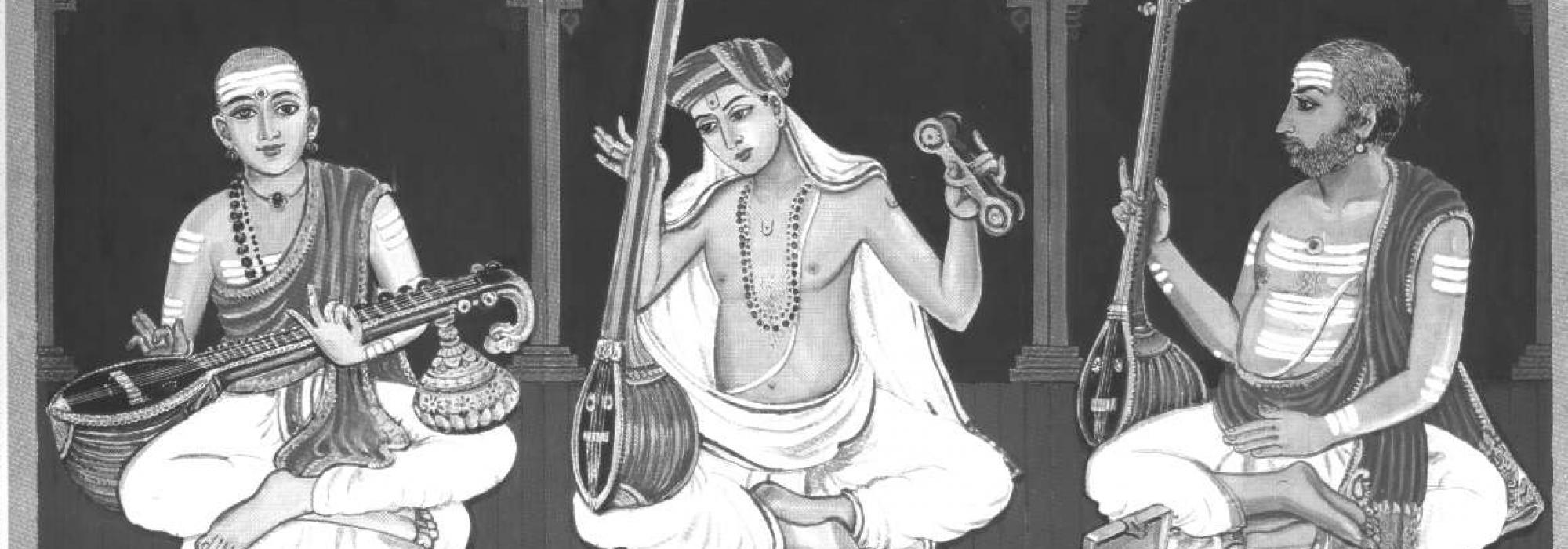The etymology of the word ‘Raaga’:
The word raaga has many meanings. Raaga means love, color (referring to red in particular), emotion, bliss, comfort, beauty, pathos , passion, attraction etc., In common parlance, however, raaga is understood as the essence of a song/music. Now what does the etymology of the word say? 'रञ्जनाद्रागः'- It means one that entertains.
In musical terms, however raaga has an important technical meaning. Bharatamuni refers to a concept called jaati in the Natyashastra. The word raaga has been used in musical reference is in Matanga’s work Bruhaddeshi. There is also enough evidence to show that the word came into vogue in the plays and poems of Kalidasa and other poets. . Matanga says -
योऽसौ ध्वनि विशेषस्तु स्वरवर्णविभूषित: |
रञ्जको जनचित्तानां स च राग उदाहृतः||Meaning, the combination of svara and varna to produce a melody which has the ability to entertain and connect to emotion of a listener is called a raaga.
Here the ability to entertain and express emotion matters more than a mere mathematical combination of harmonics or different frequencies. Svara means a tonal frequency. Varna deals with ascending and descending scales, octave and phraseology of the raaga. Most musicologists like Sharangadeva, Venkatamakhi, Ahobala, Kallinatha etc., stick to this definition of a varna. Bharats defines 10 characteristics of a raaga, viz :
graha, amsha, taara, mandra, nyaasa, apanyaasa, alpatva, bahutva, shaadava, audava
Sharngadeva has added 3 more to the list viz - sanyaasa, vinyaasa and antaramarga
One should not get intimidated by these technical terminologies. All these are textualization of various observations over a period of time. As any culture and civilization develops, subtleties and intricacies increase, due to which we tend to adapt or coin more technical terms. Now let us try and understand what these terms mean.
The reference note of a raaga is called as graha [Usually the reference note in most raagas is Sa]. Amsha is jeeva svara of a raaga, which can be understood as svara(s) that are vital to a raaga. This helps in manifestation of the raaga to the listener. Establishing mood and emotion of a raaga lies here. Higher octave is called taara, lower octave is called as mandra. Each raaga is rendered differently as far as octaves are concerned. So some raagas depending on the octave capacity of the instrument, sound better with them. For example, raagas like Brindavani and Kedaragowla sound better in higher octaves on a flute, whereas raagas like Darbari-Kanada and Asaveri sound better in lower octaves on a Gottuvaadyam or Chitraveena.
The landing note of a raaga is called as nyaasa. Svaras which are insignificant in expression of raaga are called alpatvas, while those which are essential and enhance the expressive content are called bahutva(translated as predominance). Other terms like vaadi, samvaadi, alanghana and anabhyaasa are also used in the context of bahutva.
Hexatonic scales are called shaadava, meaning those raagas having six notes in ascendence as well as descendance. Similarly, pentatonic(5 notes) scales are called audava. Sanyaasa means the elaboration of a raaga around the amsha svara, without using the vivaadi svara. The phrases of a raaga that doesn’t contain vivaadi of amsha swara is called as vinyaasa. Venkatamakhi opines that vinyaasa can be understood as various stages of elaboration of a raaga. This also leads to the recent consensus that graha, amsha and nyaasa form the characteristics of a raaga. Along with these, the specific phrases for a raaga provide the complete expressive library of a raaga. This proves that a raaga is much more than ascending and descending scales. We shouldn’t misunderstand the scale as a raaga in totality. Other than this, the relation of 2 svaras in a raaga which can be vaadi, samvaadi and vivaadi are also factors defining a raaga.
Some opine that a new raaga cannot be created since all possibilities are available among the 12 svaras. But with basic understanding of technical aspects, we can conclude that a raaga is much more than a theoretical possibility. Different chandas can be formulated using shat-pratyaya but they are identified as chandas when it is used in a poetic expression where various characteristics, like natural pauses, tempo and modulations can be felt . Similarly, a raaga is said to be invented when a musician is able to provide bhaava(emotion) to a scale, create unique phraseology and is able to demonstrate the same to his listeners.
So when we look at all these various aspects, there should be no doubt that Indian classical music is unique and beautiful. Also the western concept of tune/chord cannot be equated to raaga. At best, a tune can be looked at as a subset of a raaga.
Music isn’t a theoretical subject or just an intellectual exercise, but an emotively experiential one.
Adapted from original Kannada by Vishwanath Chandrashekar
















































